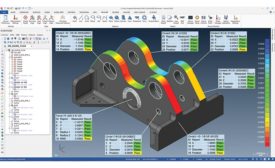Home » Keywords: » software programs
Items Tagged with 'software programs'
ARTICLES
Software
Transferring microscopy applications into production often requires validation activities.
Read More
Software & Analysis
A Corporate Commitment to Quality Requires a Digital-First Approach
Four Trends Shaping the Next Gen in Quality Management
June 10, 2021
Low-Code to No-Code: A Software Development Revolution
When software can almost write itself, then it's future proof.
May 5, 2021
A Calibration Software Solution
Integrating calibration software with asset management software for a comprehensive calibration solution and work order automation.
June 8, 2019
What Chief Quality Officers Should be Concerned About in 2019
Quality opportunities are everywhere.
April 8, 2019
GD&T, Manufacturing Imperative
Without it, nothing ships, and nobody gets paid.
March 8, 2019
Stay in the know with Quality’s comprehensive coverage of
the manufacturing and metrology industries.
eNewsletter | Website | eMagazine
JOIN TODAY!Copyright ©2024. All Rights Reserved BNP Media.
Design, CMS, Hosting & Web Development :: ePublishing







